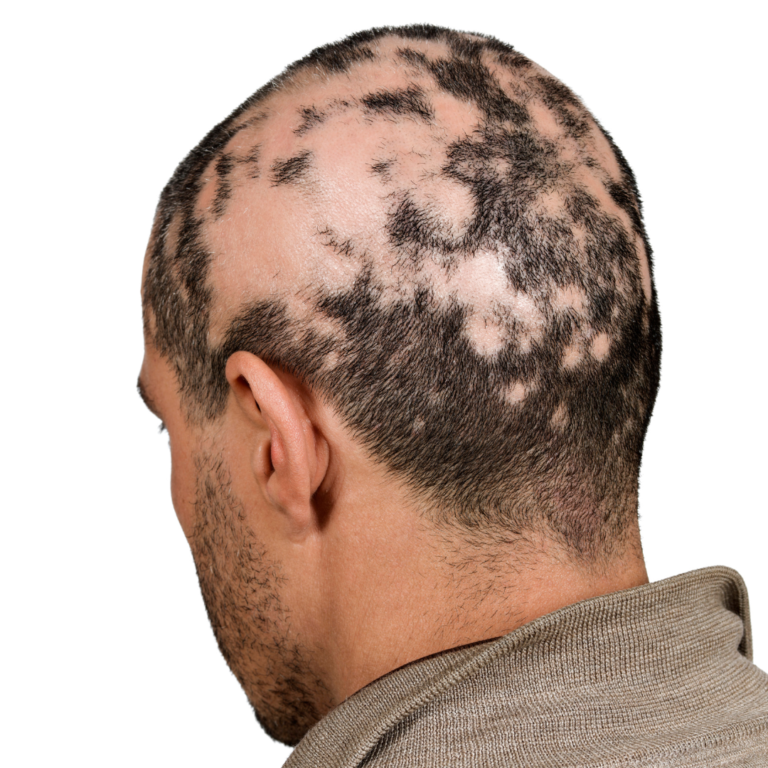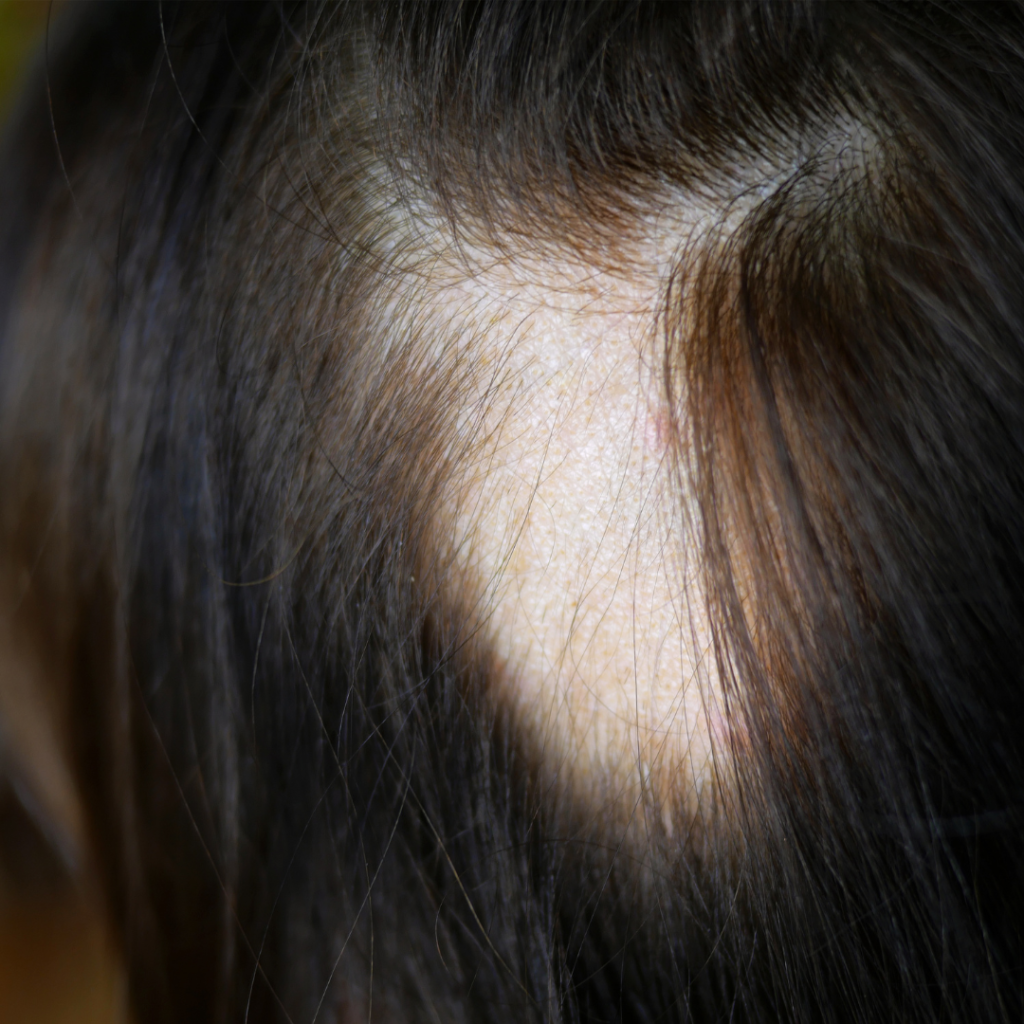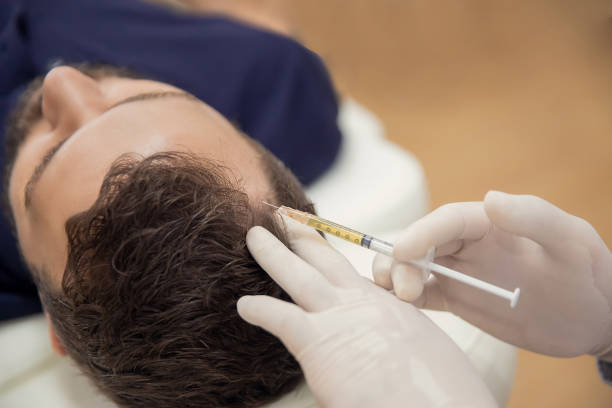No products in the cart.
Research
Alopecia Areata
Understanding the Autoimmune Hair Loss Condition
Alopecia areata is a non-scarring hair loss condition characterized by the sudden onset of patchy hair loss on the scalp or other parts of the body. It occurs when the immune system mistakenly attacks the hair follicles, resulting in hair loss. In some cases, it can progress to alopecia totalis (complete loss of scalp hair) or alopecia universalis (loss of all body hair). This disorder affects millions of people worldwide. This condition can cause unpredictable hair loss, leading to emotional distress and impacting individuals’ self-esteem. In this blog post, we will delve into the details of alopecia areata, exploring its causes, symptoms, available treatments, and coping strategies.

Causes And Symptoms of Alopecia
The exact cause of alopecia areata is still not fully understood. Genetic factors, environmental triggers, and certain medical conditions are thought to contribute to its development. Emotional stress, hormonal changes, and infections may also play a role in triggering episodes of hair loss. Alopecia areata typically presents as circular or oval patches of hair loss on the scalp. In some cases, it may involve eyebrows, eyelashes, or other body hair. The extent and severity of hair loss can vary greatly from person to person, ranging from small patches to more widespread loss. Ongoing research efforts focus on understanding the underlying mechanisms of alopecia areata and developing more effective treatments. Exciting advancements include JAK inhibitors, which have shown promising results in promoting hair regrowth in some individuals. Staying informed about the latest research can offer hope for future breakthroughs.
Treatments Options For
Alopecia Areata
While there is no cure for alopecia areata, several treatment options can help manage the condition and promote hair regrowth. These include topical corticosteroids, minoxidil, intralesional corticosteroid injections, and immunotherapy. Dermatologists may tailor treatment plans based on individual needs and the extent of hair loss. Alopecia areata is a challenging condition that can have a profound impact on individuals’ lives. By understanding its causes, recognizing the symptoms, exploring available treatment options, and seeking emotional support, those affected can navigate their journey with greater resilience.

OLUMIANT
Olumiant is a verbal medicine pharmaceutical that’s affirmed to treat serious alopecia areata. Other medications for alopecia are as a rule given topically (connected to the skin) or as an infusion. Olumiant is the primary verbal treatment alternative completely affirmed for alopecia areata. And it doesn’t fairly work locally like a few other treatment choices — it aims to work all through the whole body.
Olumiant itself isn’t all that unused. Typically fair a modern utilize for the pharmaceutical. It was first FDA-approved in 2018 to treat grown-ups with direct to serious rheumatoid joint pain who have attempted and fizzled treatment with a tumor rot figure (TNF) inhibitor, like etanercept (Enbrel) or adalimumab (Humira).
How does Olumiant work to treat alopecia?
Olumiant is known as a Janus kinase (JAK) inhibitor. It works by blocking the activities of JAK proteins (proteins), which play a part in safe signaling and cause irritation in our bodies.
DEURUXOLITINIB (CTP-543)
Concert has a strong clinical program evaluating deuruxolitinib as an oral drug for the treatment of alopecia areata. The FDA has granted Rapid Track and Breakthrough Therapy designation for deuruxolitinib. Concert is evaluating the efficacy and safety of deuruxolitinib in adult patients with moderate to severe hair loss in the Phase 3 THRIVE-AA clinical program.
The concert reported the first positive data from the THRIVE-AA1 and THRIVE-AA2 trials. The primary efficacy endpoint of both studies was the percentage of patients with an Alopecia Severity Severity (SALT) score of 20 or less after 24 weeks of treatment, achieving were statistically significant for both the 8 mg twice daily dose and the 12 mg twice daily dose compared with placebo. Data from THRIVE-AA1 and THRIVE-AA2 to form the basis for a New Drug Application (NDA) is expected to be filed with the US Food and Drug Administration (FDA) in the first half of the year. 2023.


